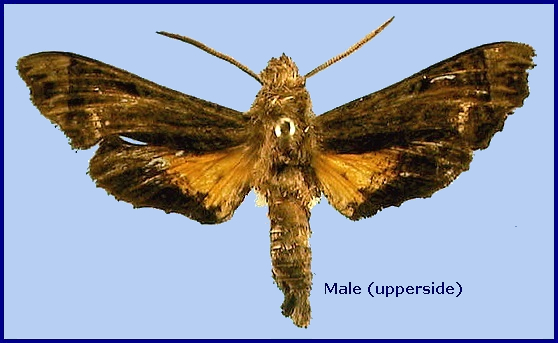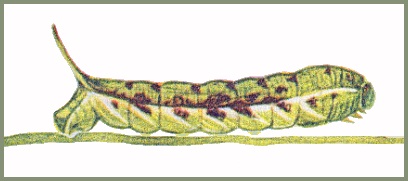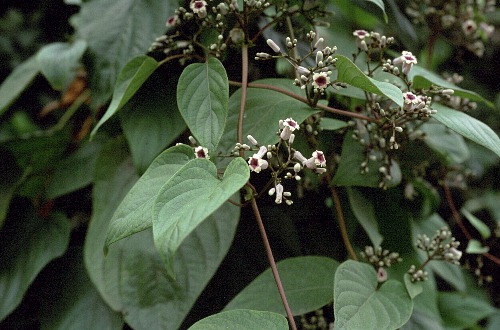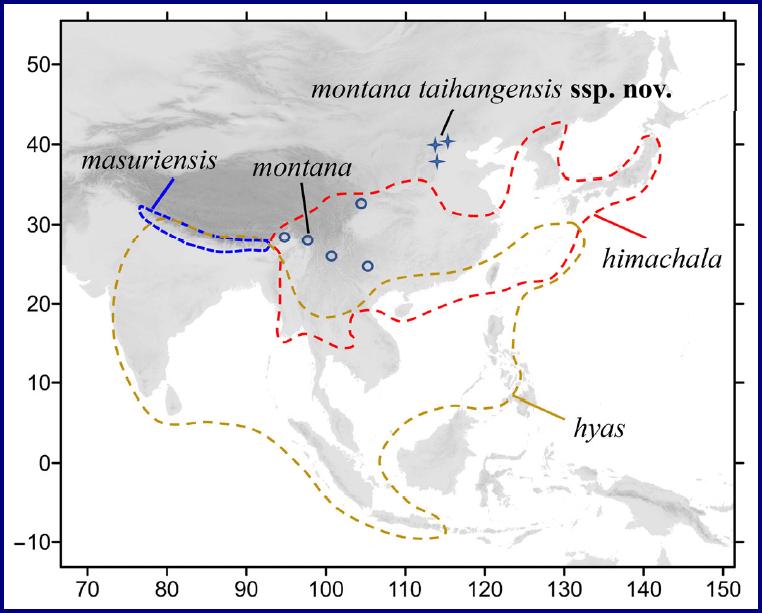



Gurelca montana Rothschild & Jordan, 1915, Novit. zool. 22: 289. Type locality: [China,] Tibet [probably western Yunnan/Sichuan].
Synonym. Gurelca montana Rothschild & Jordan, 1915.
Synonym. Gurelca saturata Mell, 1922.
Wingspan: 44mm. Upperside of body and forewing silky ashen-grey, without the reddish-brown markings of other species. Forewing with a short, dark, subbasal band bordered on the outer side with white; a dark oblique band from costa towards tornal angle, also bordered on the outer side with white, reaching M3 . The hindwing blackish-brown border less sharply defined than in Neogurelca himachala, strongly broadened at costa, where its inner margin reaches the proximal end of the apical lobe. Apical lobe ashy-bluish, bordered black proximally. Underside: forewing dark brown as far as the postdiscal line at inner angle, the postmedian line thin, brownish-yellow in fresh specimens and ivory-yellow in older ones. Hindwing ashy greyish-brown, anal area pale straw-coloured. Distal margin of forewing more deeply emarginate under M1 than in the other species; inner margin also deeply emarginate before tornal angle; costa of hindwing deeply emarginate (Bell & Scott, 1937).
According to Mell (1922b), this species is fairly common between July and October at 2000-2400m altitude on grassy slopes, but can ascend to over 3300m in Yunnan (ChangQiu Liu, pers. comm 2020).


July to October, sometimes into November. However, those from Nyingchi/Linzhi, Xizang/Tibet, were captured in early June - 4.vi.2021 (Xu, He, Yang, Kitching & Hu, 2023).
OVUM: Unrecorded.
LARVA: According to Bell & Scott (1937, ex Mell), in the final instar horn of medium length, slightly up-curved, tip broadly bifid.
Head green with a yellowish-white stripe separating face from cheek. Body green with fine pale yellowish speckling. A yellowish-white subdorsal stripe extends from segment 2 to the base of horn and thence on to 13, enclosing a rust-brown dorsal patch behind horn in some. There are pale yellowish-white oblique lateral stripes, the angles formed by the junction of these oblique stripes with the subdorsal stripe filled in with rusty-red in some; the subdorsal stripe may also be edged above with rusty-red near these junctions in some. True legs reddish, venter rust-brown on 2 to 4. Spiracles black with a white, dumbbell-shaped central slit. Horn slate-colour with a pale ring beyond the middle and darker tip. This is waved up and down when the larva is disturbed, a behaviour also found in other members of the genus. The whole larva becomes a rich plum colour prior to pupation (ZhenBang Xu, pers. comm. 2024).



PUPA: Probably the same as for Neogurelca montana taihangensis Xu & He, 2023.
Larval hostplants. In China on Paederia foetida (Bell & Scott, 1937, ex Mell) and Leptodermis (ZhenBang Xu, pers. comm. 2024).

Unknown.
China: Western Sichuan; Yunnan (Kunming; Yanmen; Cangshan (Dali University, 2200m); Deqing/Dêqên (Shangri-La Alpine Botanical Garden, 3300m); Bingzhongluo Scenic Area; Shigizhen, Yulong Naxi Autonomous County, nr. Lijiang); Xizang/Tibet (Nyingchi/Linzhi, 2400m).
This species has recently been recorded west of Beijing in the Baihua Shan, Beijing Botanical Garden and Huangshandian Village (Beijing Shangfangshan National Forest Park, Fangshan District) as Neogurelca montana taihangensis Xu & He, 2023, indicating that this species may occur all along the edge of the Tibetan Plateau, from Yunnan to Beijing (Xu ZhenBang, pers. comm. 2020 & 2021; Xu, He, Yang, Kitching & Hu, 2023). In China, montane populations recorded as Neogurelca himachala (Butler, [1876]) should be checked carefully to make sure they are not Neogurelca montana.
Endemic to southern China.

Map: Distribution of species of genus Neogurelca in Asia. The ranges of three species are represented by dashed lines. The blue circles indicate the populations of N. montana montana in Yunnan and Sichuan, the blue stars indicate the populations of N. montana taihangensis in Beijing and Hebei (© Xu, He, Yang, Kitching & Hu, 2023).
 Return to Sphingidae of the Eastern Palaearctic species list
Return to Sphingidae of the Eastern Palaearctic species list